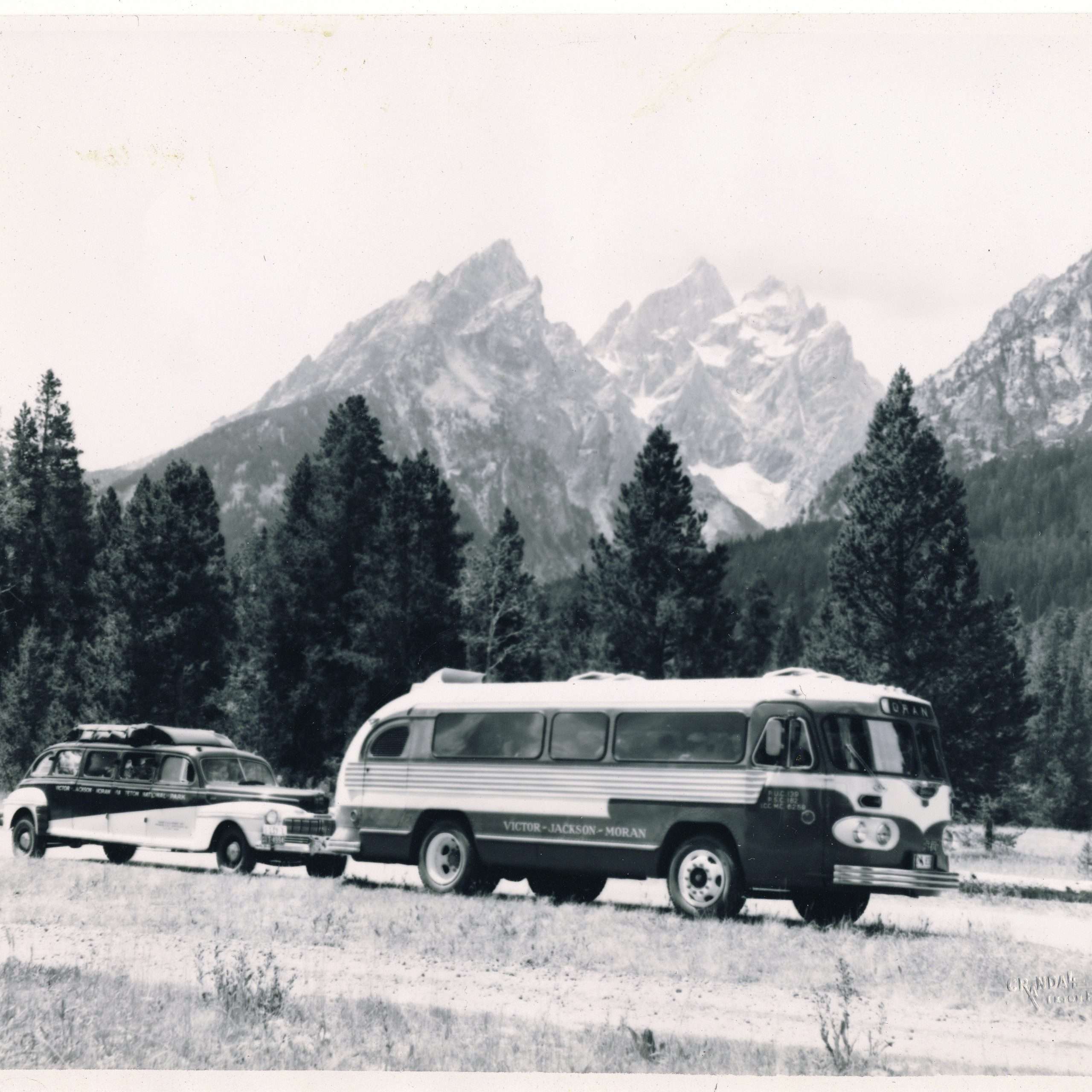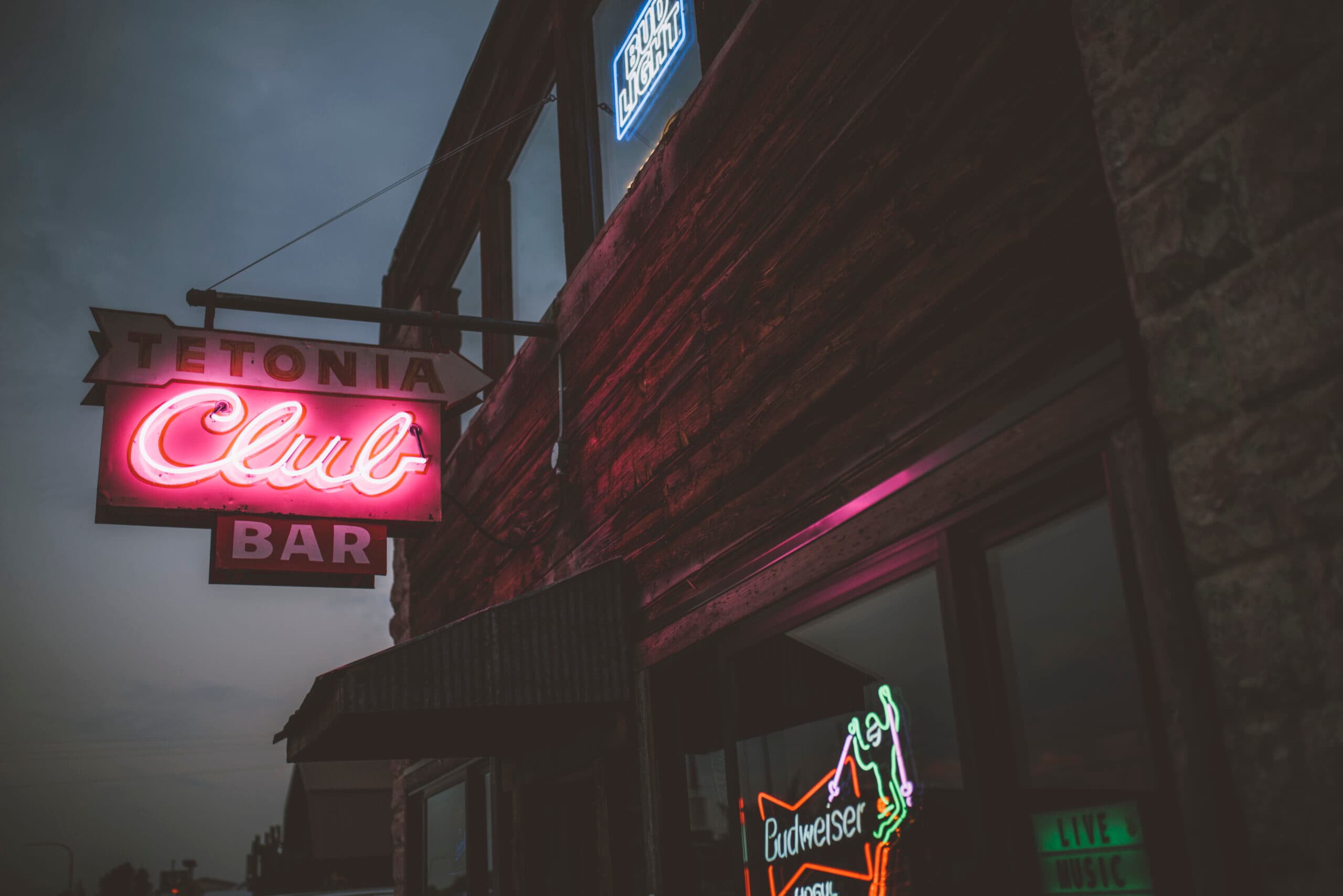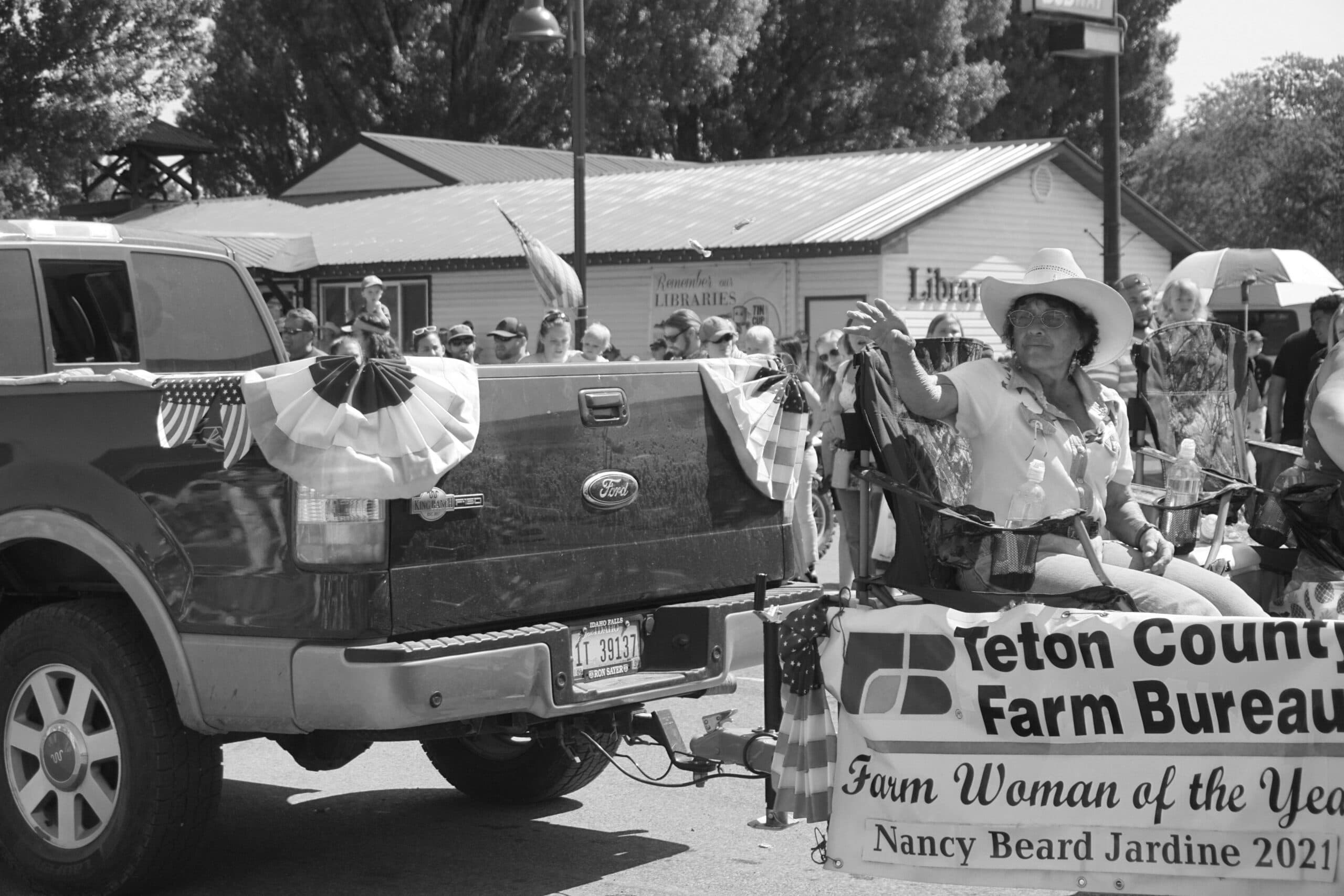Ties to the Past
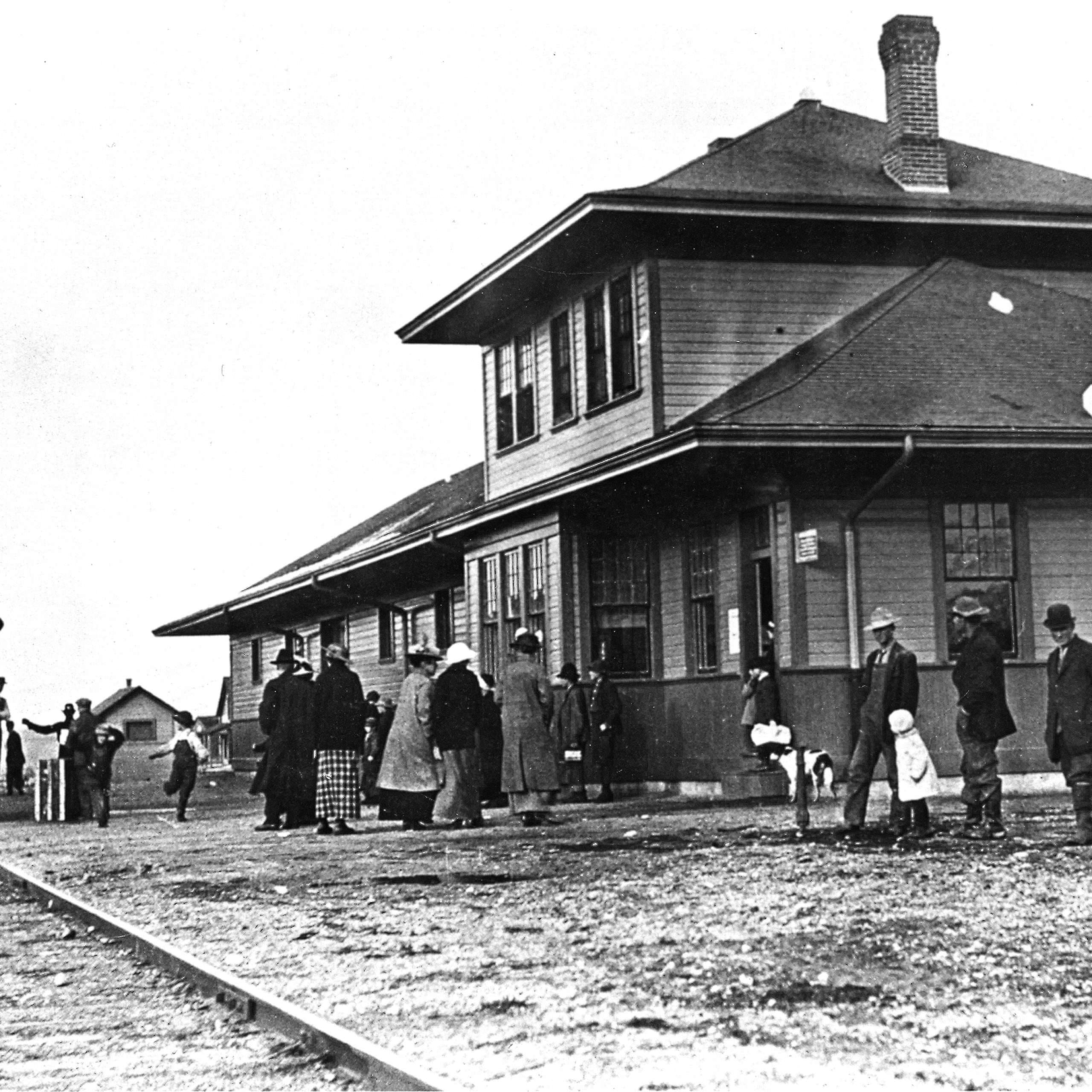
“The fire had burned a wide hole clear through, so you could see the seared beams below,” said Jim Wurth of Wilson, Wyoming, who purchased the Victor Railroad Depot not long after the 1992 fire. Fortunately, the fire on the original wooden floor of the passenger waiting room—set by pranksters who went a little too far—was somehow extinguished, saving the depot and permitting Wurth to buy and renovate it.
Wurth’s renovation project represents just one chapter in the story of the Victor Railroad Depot, the deep-yellow structure with a green roof and brown trim that stands majestically on the western flank of downtown. The depot has served the community for almost a century, first as an operating railroad depot and then as residential apartments. Now, with its preserved architecture and National Historic Place designation, it is a potential cornerstone of what could become a more thriving, vibrant Victor downtown district.
It’s rare that one building could offer so much—but then again, it’s a rare building. In The American Train Depot & Roundhouse, authors Hans and April Halberstadt state that of the more than 140,000 railroad depots that have been constructed in the United States, only about 20,000 remain. Each of these precious structures has a story to tell, and the Victor Railroad Depot is no exception. Its story starts with the railroad.
On July 1, 1913, the first train steamed into Victor on rails laid by the Oregon Short Line, a subsidiary of the Union Pacific Railroad. The citizenry couldn’t have been happier, as the railroad promised greater prosperity and an easier existence. “The biggest and most significant commercial venture ever to come to Victor was the railroad,” wrote Brent Michael Holmes in his centennial-celebrating book Victor, Idaho—1889–1989 .
With its hauling power and ability to cover great distances, the railroad could quickly transport residents to places that formerly took weeks or months to get to. It also created jobs; opened new markets for farmers, ranchers, and businesses; and brought in products previously difficult to obtain.
Something was needed to facilitate the movement of all of these goods and people, and that something was the railroad depot.
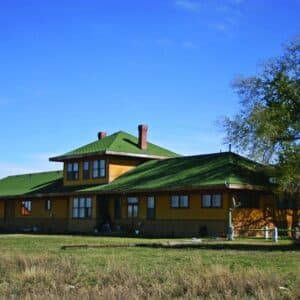
“The depot architecture was very common for that era,” said John Bromley, director of historic projects at the Union Pacific Railroad Museum in Council Bluffs,Iowa, noting that the Victor depot was constructed in 1913, the same year the tracks arrived in town from the north. The depot’s simple, uniform exterior styling disguised its multi-function interior design, which featured a distinct separation for its dual industrial and residential purposes.
The upstairs, where the depot agent lived, maintained the warmth and feel of a home, while the first floor had more of a factory atmosphere. Strategically located within the center of the first floor was the depot agent’s office. Its small, 370-square-foot size belied its vital importance. The office safely separated the waiting passengers in the south end from the noise and hazards of the baggage and freight room at the north end, while allowing the agent to keep his finger on the pulse of all activity and to perform his duties.
Among those duties was ensuring the efficient movement of the trains in and out of the depot area. This task was facilitated by the 180-degree view from the bay window on the west wall of the office, which permitted the depot agent to keep an eye up and down the tracks. Meanwhile, the signal mast adjacent to the tracks allowed him to communicatewith arriving and departing train engineers, and the office telefor graph made it possible to send and receive messages to and from other depots, thereby monitoring train movements up and down the line. The agent also used the office to welcome arriving passengers, sell tickets to departing passengers, and move goods and livestock in and out of the depot.
“Though based on a standard drawing, the Victor Railroad Depot appears a little larger than average,” said Bromley. The large freight room at the north end of the building accounted for the extra size; at 2,080 square feet, it encompassed fully two-thirds of the 3,160-square-foot floor space.
Because Victor was the terminus of the Teton Valley Branch line, the freight room needed to be a little larger than average, as it had to serve both the immediate area and distant locales, such as Jackson Hole and Swan Valley.
The 286-square-foot baggage room sat between the office and the freight room, while the original 365-square-foot passenger waiting room was located at the south end of the building. The waiting room’s diminutive size, when compared to the extra-large freight room, reflected the relative importance placed on freight over passengers in the early years of the depot.
That emphasis on freight over passengers would change, however, when in 1928 the railroad tripled the floor space at the south end of the depot to accommodate an anticipated increase in the number of tourists. The additional 850 square feet included a larger waiting room, bathrooms, and bigger dressing rooms with showers that would allow travelers to freshen up after a long journey.
In Yellowstone by Train, Thornton Waite cites the impending creation of Grand Teton National Park in 1929, as well as dude ranch promotion by the railroad earlier in the decade, as factors contributing to the decision to expand.
Accessed by an interior staircase, the snug, 500-square-foot living quarters upstairs included a kitchen and bedroom of equal size on the south half and a front room in the other half. “We had running water in the kitchen for doing dishes and cooking, but no bathrooms or showers when we first moved in,” said Olive “Bee” Sessions, widow of Gordon had to go up and down those stairs quite a bit to use the facilities downstairs.
“That depot saw an awful lot of business in the time we were there,” added Sessions, who still lives nearby. “I can remember seeing upwards of forty stock cars going off in the distance, filled with nothing but cattle being sent off to market.”
Rancher and former Wyoming governor and U.S. senator Clifford Hansen of Jackson Hole was among those who took advantage of the rail line. After driving his herd over Teton Pass into Victor, “we’d store them in the stock pens provided by the railroad,” he said, “and they would be fed a little hay and water.” The stock pens were intentionally located northwest of the depot to keep smelly cattle cars at a distance.
As an alternative to shipping sheep directly, a local wool co-op was organized, said Victor resident and former sheep rancher Verl Bagley. “Ranchers would sheer the sheep themselves,” he said, “then bring the wool to the depot, where they would use the freight room to prepare shipments.” They would bag and store the wool in big, eight-footlong bales in the freight room, Bagley said, then load them onto handcarts, move them over the scales, and load them onto the boxcars. “I ran those handcarts quite a bit,” he said. “We would stack those bales three and four high inside those boxcars.”
Bagley and his family also used the depot to ship five- and ten-gallon containers of cream from their milk cows. “We would load the containers at the depot in the morning, then the empty containers would be shipped back on the train the next day with a check,” he said. “That’s how the cream got to market.”
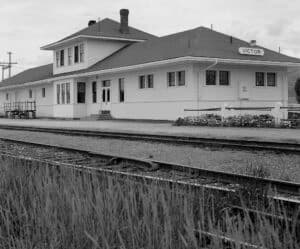
The depot saw a regularly scheduled passenger train arrive and depart daily, and it also hosted a number of special trains. Among those was the snow train, which first chugged into Victor and unloaded its revelers on January 30, 1938. These winter-sports enthusiasts from Idaho Falls, Pocatello, and towns of the Upper Snake River Valley had come to help celebrate the first winter of operation of the Victor ski hill. A news article in the February 2, 1938, edition of the Idaho Falls Post Register notes that the train was greeted at the depot by “bands, scores of bobsleds, and a hearty welcome from the people of Victor,” who were full of excitement for their guests and the day of skiing events ahead.
Another winter activity for which the depot sold tickets was sled-dog racing. According to Waite in his book Yellowstone Branch of the Union Pacific , races going between West Yellowstone, Montana, and Ashton, Idaho, began in 1917, attracting thousands of spectators. The railroad sponsored the event and ran special trains for spectators from Victor and elsewhere. Communication with the outside world was often accomplished by way of the depot; whether it was magazines, newspapers, or mail, it usually came to and went through here. Sometimes messages needed to get in and out in a hurry, in which case the Western Union wire service was utilized. According to his widow, Gordon Sessions was such a skilled telegrapher that he made his own telegraph keys, allowing him to transmit wires with tremendous speed and accuracy.
In the 1950s, residents of Teton Valley, along with most of America, began choosing the automobile and the airplane over the train for travel. At the same time, trucks began dominating commercial transportation. Even with the closing of the Tetonia and Driggs depots, and their subsequent consolidation into the Victor operation around 1960, the demand for train services from the terminus slowly declined. The last regularly scheduled passenger and mixed freight/passenger trains ran in 1965, with sporadic service until the final train in 1971. Bromley said the line between Tetonia and Victor was officially abandoned in 1981, though his archives show a snowplow clearing the line in April 1982, possibly for the removal of any remaining pieces of equipment. The rails and ties were removed in March 1984, according to Brent Michael Holmes. Afterward, the depot sat abandoned until the railroad sold it to John J. Horn of Jackson Hole in 1989. Horn rented it to several tenants, including the National Outdoor Leadership School, before selling it to Jim Wurth in 1992.
Wurth had purchased the depot after retiring as a commercial airline pilot. Thinking of both its income potential and historical significance, he hoped the depot could eventually be listed on the National Register of Historic Places. Prior to applying for the designation, he learned that the Internal Revenue Service offered a tax credit on renovation costs associated with certain types of structures. Since income generation was one of his objectives, and sensing a need for more housing in the area, he decided to turn the depot into apartments.
Renovating the depot and qualifying for Historic Place designation proved to be no easy task; strict adherence to guidelines to maintain architectural integrity and historic materials was necessary. One requirement resulted in the need to heat and then scrape by hand to remove the white paint covering the depot’s 35,000 square feet of wooden exterior. “It was a horrendous and expensive task,” Wurth said. “It took a crew of six people weeks to do it.”
The renovation, completed in 1993, resulted in four apartments on the first floor and one on the second floor. With the exceptions of several interior dividing walls, the covering of two freight-room doors from the inside, and the conversion of two other freight doors to standard entrance doors, the interior and exterior retained their original design. The ticket window between the office and waiting room remained, as did the bubble windows and stall doors in the bathrooms.
The bay window in the depot agent’s office was left intact, and it and the other windows kept their original hardware. Highlighting the exterior were the original freight doors on the west and north walls and the freight platform-turned-deck on the east and north sides.
The exterior received a fresh coat of paint. “I did some research,” Wurth said, “and with the help of a Sherwin-Williams dealer in Idaho Falls, I was able to find the identical colors used on the original structure.” Bromley at the Union Pacific Museum, where Wurth had made some earlier research inquiries, called the exterior walls “mustard yellow” and the trim “Harriman brown.” The latter was named after E.H. Harriman, the man who reorganized and modernized the Union Pacific Railroad in the late 1890s and early years of the twentieth century.
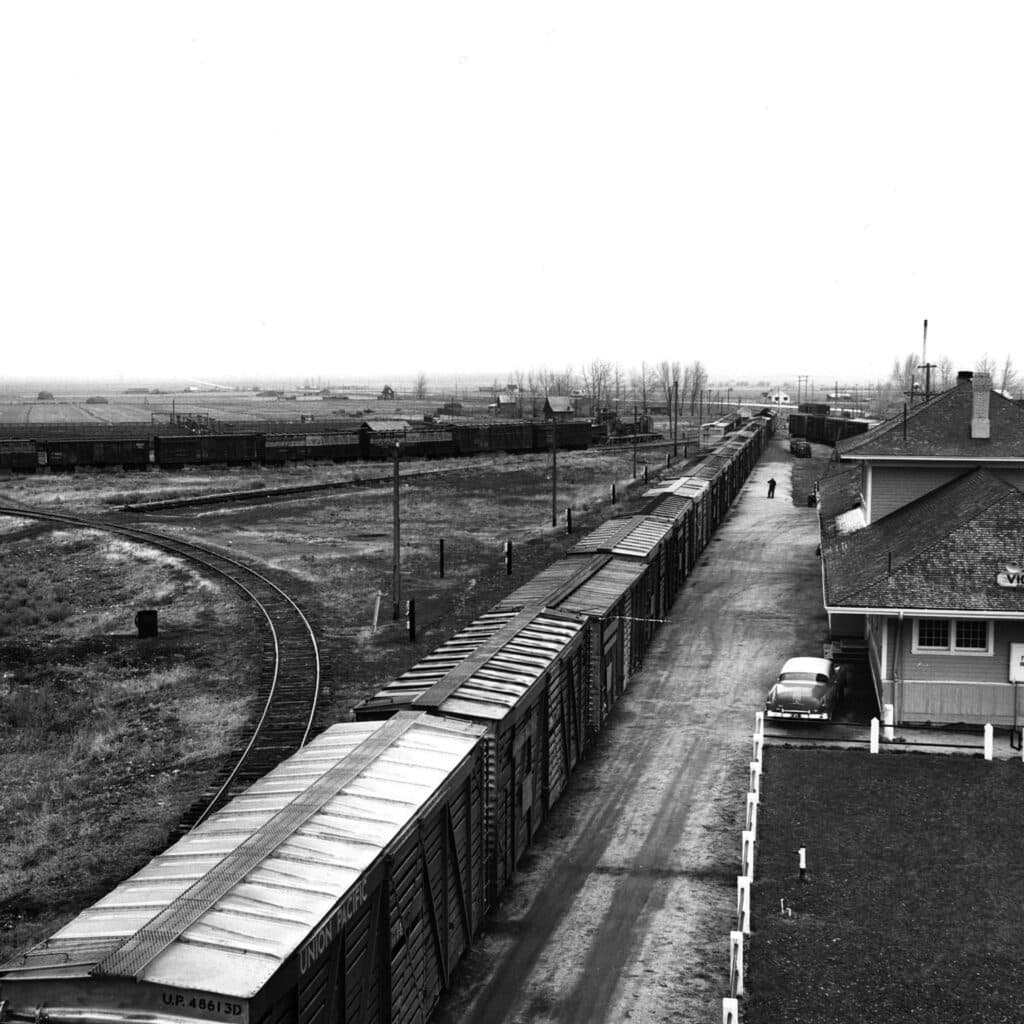
The Victor Railroad Depot was formally listed on the National Register of Tourists were soon knocking, asking when the train was coming in.
Though it had required a great deal of hard work and expense, Wurth said once the depot was listed, “I felt great. It took a lot of time, but I felt the depot was worth it. And I had a good time doing it.”
So authentic was the renovation, Wurth added, that tourists were soon knocking on the doors of new tenants asking when the train was coming in. Wurth sold the depot in 1998 to John Wasson of Wilson, who has continued to operate it as apartments. “I value its historical importance,” Wasson said, a statement supported by his personal collection of dozens of pages of documentation and photographs. “I try to point out to tenants the interior and exterior details that make it special, so they will appreciate it that much more.”
Throughout America, the appeal of restored depots has provided the catalyst for development in cities and towns. The depot’s combination of historical significance, architectural uniqueness, and present-day functionality has become a powerful draw. Though at this time Victor needs little more than its natural beauty and gateway location to create growth, city leaders might nevertheless consider the depot in future plans. Downtown development that included the depot as part of a walking tour and/or historic district could help maintain
Victor’s small-town feel and downtown charm. Residents and tourists alike would be more likely to stop, walk, bike, shop, and just sit and enjoy the splendor. As one of only four places in the county to earn a spot on the National Register of Historic Places, and the only one in Victor, it’s certainly deserving of such attention.
With our “tear it down, we’ll build a new one” mindset, we in America often sever our connections to history. Whenever we can weave a worthy thread of the past into the fabric of the present, however, we will create a stronger future. Showcasing its beautiful railroad depot as a centerpiece of downtown would be one way for the city of Victor to demonstrate that it honors its past as much as its present—while building for tomorrow on a foundation erected by our pioneers.


